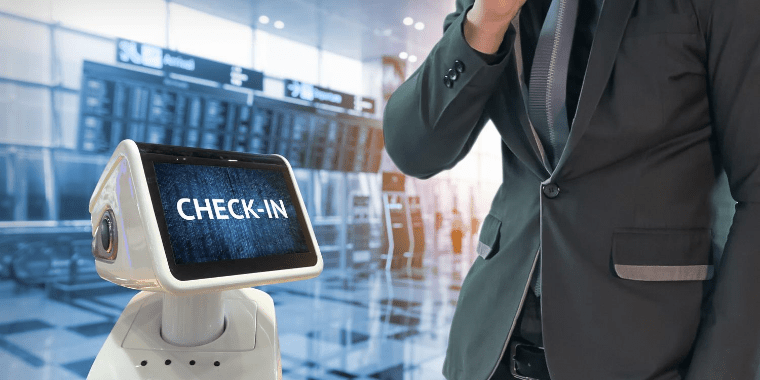Aug 19, 2020 Jan Uphues
ShareDuring the pandemic peak, it was just a matter of survival. All airlines, airports and ground handlers had to make decisions and implement them promptly. The shock waves are over now. Despite the resurgence in infection numbers worldwide, the industry has restarted and trying to get things going again as well as possible. At this writing, some airlines have reached approximately 50% of last year’s flight volume, but most have not yet achieved this milestone.
COVID-19 AND THE CHALLENGES FOR AIRLINES
But where do they go from here? Many airlines face a three-fold problem: They have to increase staff and equipment capacities to fulfill pandemic-related regulations and incurred the related costs. They need to rebuild trust in passengers, encouraging them to book flights. This is a complicated task that must be balanced with the rates of infection in countries where flights are originating, as well the destination region. The travel bans and restrictions have been lifted and then, partially re-introduced again. This makes planning, scheduling and operating more complex and fragile than ever. It seems the industry has to fight its way back, until and through the low-volume winter season before the number of flights and seat load factors improve and profitability finally returns in summer next year.
But here’s the third problem. During the pandemic, the industry accumulated billions of dollars in debt just to exist on the market at least for the short- and medium-term. This debt is now weighing on the airlines’ budgets, consuming funds previously earmarked for investments. It is clear that the only investments that will be made will be to contain costs for the long-term, ensure more efficient processes, and make the passengers’ travel experience as pleasant as possible.
TECHNOLOGICAL INNOVATION IS KEY
The market experts are unanimous: new technologies will be key investments to survive. Over the last few years, AI has found a wide array of applications at ground handling services. The demand is expected to grow with increasing cost pressures and higher efficiency required. According to IATA, online check-in will become the norm, including the home printing of bag tags. This will not only save costs, but also minimize close interaction with staff and kiosks, and generally help with social distancing measures landside. Also, touchless technology will win out wherever it is possible. The challenge for airport operators is, as an example, incorporating facial recognition when they have already spent money on fingerprint scanning infrastructure.
MACHINE LEARNING TO SUPPORT GROUND OPERATIONS
These are only two of the obvious examples for passengers as end users. Additionally, machine learning functionalities will be applied in ground handling management. Among the areas where machine learning will be used are: planning, scheduling and the assignment of tasks and resources.
Machine learning applications can be used to provide an optimization with better values regarding flights and job attributes at an early stage, which improves the quality of the optimization itself. Dispatchers also benefit because they can make better decisions earlier and implement them manually.
Another example relates to waste and environmental issues. According to IATA data from 2018, 6.7 million tons of cabin waste is generated by airlines every year. Each passenger generates more than 3 pounds of cabin waste. To make things worse, plastic is a significant component of this cabin waste and causes irreversible environmental problems around the world. Machine learning algorithms have been applied to help solve this problem. The demands for snacks may depend on the weather, types of passengers onboard, and their willingness to pay. Airlines can utilize predictive models which consider these factors to ultimately help reduce waste.
MORE AUTOMATION NEEDED TO NAVIGATE TURBULENT TIMES
Despite the fact that currently there is low turnover and costs, while uncertainty remains high, there is no getting around the fact that airlines and airports must invest in their future to ultimately save money and streamline processes. Both EUROCONTROL and SESAR (Single European Sky ATM Research Programme) believe that the ongoing coronavirus crisis could help foster automation in the industry despite the challenges it is causing. This of course presumes that the industry will recover relatively soon and return to profitability. If these conditions are met, the aviation industry can not only return to its former strength in a few years, but can become a pioneer in the application of machine learning.
About our Expert

Jan Uphues
Marketing Manager
From the exhilarating rush of his very first flight, Jan Uphues was captivated by the world of aviation. Though that maiden voyage had its jittery moments, it set the course for a lifelong passion. Starting at INFORM in 2018, he combined it with his second love: crafting compelling content.


